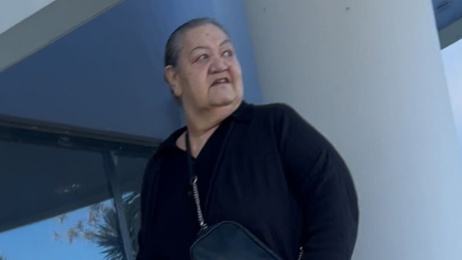
There are 2706 new cases of Covid-19 and 9 Covid-related deaths announced today.
There are 432 cases in hospital, including 9 in intensive care.
Of the nine people whose deaths were reported today, four were from Auckland region, two were from Waikato, one was from Canterbury and two were from Southern.
One was in their 50s, three were in their 60s, two were in their 70s, two were in their 80s and one was aged over 90.
Five were women and four were men.
The seven-day rolling average of cases continues to decline - today it is 3655 while last Monday, it was 4230.
The weekly average of hospitalisations today is 472; last monday 570.
There is now a total of 1824 deaths confirmed as attributable to Covid-19 (either as the underlying cause of death or as a contributing factor).
The seven-day rolling average increase in total deaths attributable to the virus is now 10.
New Zealand's rolling average of Covid-19 cases continues to tumble after topping 10,000 last month – but a modeller doesn't expect rates to drop too much lower.
Dr Dion O'Neale, of Covid-19 Modelling Aotearoa, also said our community case numbers – the lowest seen since the beginning of the country's first Omicron wave in February – needed to be viewed in the context of under-reporting.
As at Sunday, the rolling seven-day average stood at 3733, compared with 4302 the week before, and more than 10,400 in mid-July, amid the peak of the BA.5-powered winter wave.
O'Neale said a daily case number below 5000 was "on the lower side of what we'd expect" currently.
The true number of infections in our community would almost certainly be higher – the figures reported by the Ministry of Health perhaps represent 40 to 65 per cent of cases – and under-reporting appeared a to be clear factor in some days' particularly low case counts.
"But, after experiencing these two peaks, we've also decreased the size of our susceptible population by quite a bit – and there's now fewer people remaining to be infected."
More than three million Kiwis have likely been exposed to Sars-CoV-2, something that would have left them with virus-fighting antibodies on top of the protection against severe Omicron infection they'd received through vaccination.
With the national case average already having fallen below 20 per cent of what it was in mid-March, the question remained: where would it bottom out?
"I don't think we'll get much lower, in terms of actual infections that are going on in our communities."
The virus' estimated reproduction number in New Zealand – measuring the average number of people directly infected by a single infectious individual – was now sitting just below one.
Despite scientists observing a strong genetic correlation between BA.5 border cases and community cases, there's also no sign yet of the country's reopening to international visitors triggering any major shift in infections.
What turned the current trend-line around, O'Neale said, would either be a new variant that managed to evade the immunity we'd built up, or a rise in reinfections as that immunity waned.
Meanwhile, he said it was positive to see hospitalisation numbers tracking downward as well – something in which second boosters for vulnerable elderly people were likely playing a part.
As at Sunday, the rolling average of hospitalisations with Covid-19 was 487, compared with 587 the week before.
That was also roughly half the daily patient numbers recorded amid the peak of the first and second waves – although daily deaths are still being reported in the double-digits, making the virus one of the country's leading contributors to mortality.
"Hopefully, we can keep hospitalisation numbers down."
Take your Radio, Podcasts and Music with you









